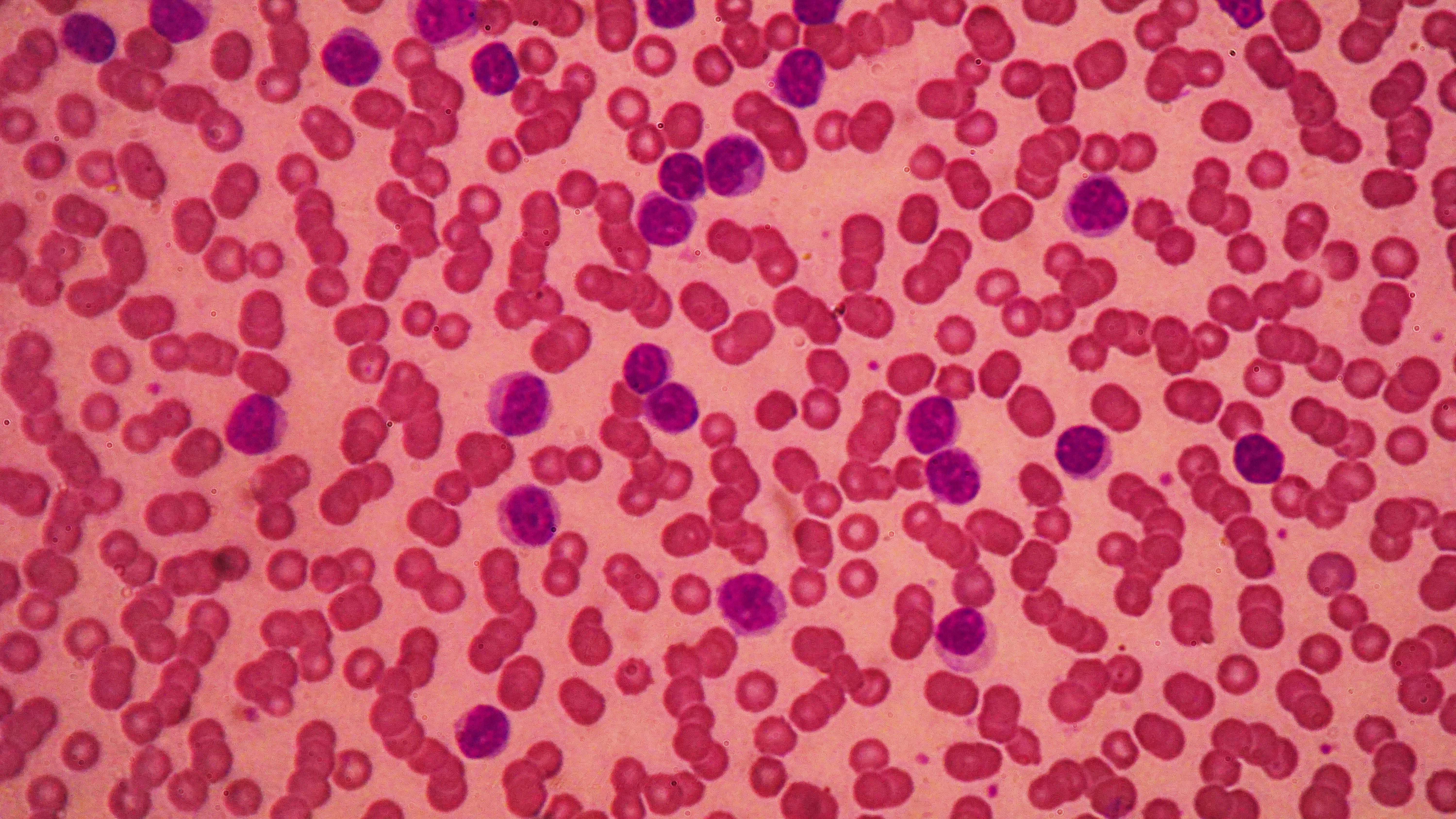Zanabrutinib Remains Favorable Over Bendamustine/Rituximab in CLL/SLL
At a median follow-up of 61.2 months, zanabrutinib demonstrated superior PFS vs bendamustine and rituximab in patients with CLL and SLL.
At a median follow-up of 61.2 months, zanabrutinib demonstrated superior PFS vs bendamustine and rituximab in patients with CLL and SLL.

A 5-year follow-up study of the randomized, open-label phase 3 SEQUOIA trial (NCT03336333) found that zanubrutinib (Brukinsa), a selective next-generation Bruton tyrosine kinase (BTK) inhibitor, remained a favorable treatment option for previously untreated patients with chronic lymphocytic leukemia (CLL) and small lymphocytic lymphoma (SLL) without a del(17p), according to results published in the Journal of Clinical Oncology.1
Results from the SEQUOIA trial were also presented at the 2024 American Society of Hematology (ASH) Annual Meeting and Exposition.2
The initial prespecified analysis at a median follow-up of 26.2 months and subsequent analysis at 43.7 months showed that patients who received zanubrutinib experienced superior progression-free survival (PFS) compared with those who received bendamustine (Treanda) plus rituximab (Rituxan). At a median follow-up of 61.2 months, median PFS was not reached (NR) in patients who received zanubrutinib vs 44.1 months in patients who received bendamustine plus rituximab (HR, 0.29; 95% CI, 0.21-0.40; P <.0001).
In patients with mutated and unmutated immunoglobulin heavy-chain variable region (IGHV) genes, prolonged PFS was seen for patients who received zanubrutinib (mutated: HR, 0.40; 95% CI, 0.23-0.69; P = .0003; unmutated: HR, 0.21; 95% CI, 0.14-0.33; P < .0001). Median overall survival (OS) was NR in both treatment arms; estimated OS rates at 60 months were 85.8% for patients who received zanubrutinib and 85.0% for patients who received bendamustine plus rituximab (HR, 0.89; 95% CI, 0.55-1.43; P = .309).
“Compared with [bendamustine plus rituximab], zanubrutinib provided greater PFS in treatment-naïve patients without del(17p) and was well tolerated over a median follow-up of 61.2 months,” lead study author Mazyar Shadman, MD, MPH, associate professor in the Clinical Research Division and medical director of Cellular Immunotherapy at the Fred Hutch Cancer Center, and coinvestigators wrote.1 “This extended SEQUOIA follow-up continued to support the use of zanubrutinib as a preferred first-line treatment for patients with CLL/SLL.”
In the SEQUOIA trial, a total of 479 patients were randomly assigned, in a 1:1 ratio, to receive either zanubrutinib (n = 241) until disease progression or unacceptable toxicity or intravenous bendamustine plus rituximab (n = 238) for 6 cycles.
Patients were eligible for inclusion if they had untreated CLL/SLL, were 65 years or older or were 18 years or older with comorbidities, and if they had 1 or more International Workshop on CLL indications for treatment.
Those who received bendamustine plus rituximab were permitted to change, at investigator discretion, to zanubrutinib after disease progression.
Key trial outcomes included PFS, overall response, complete response (CR), CR with incomplete hematologic recovery, and OS.
At the median follow-up of 61.2 months (range, 0-78.0), 77 patients (32.0%) who received zanubrutinib had discontinued treatment, and 188 patients (79.0%) assigned to receive bendamustine and rituximab completed all 6 cycles of treatment. Adverse effects (AEs) and progressive disease were the most common reasons for zanubrutinib discontinuation.
Regarding safety, 229 patients (95.4%) who received zanubrutinib and 214 patients (94.3%) who received bendamustine plus rituximab experienced at least 1 treatment-emergent AE. Grade 3 or higher AEs were experienced by 163 patients (67.9%) and 169 patients (74.4%), respectively.
Treatment-emergent or post-treatment AEs of interest (AEIs) of any grade in patients who received zanubrutinib and bendamustine plus rituximab included infection (79.6% and 65.6%), bleeding (52.1% and 13.2%), hypertension (22.9% and 13.7%), neutropenia (17.1% and 56.8%), anemia (9.6% and 21.1%), thrombocytopenia (7.1% and 18.5%), and atrial fibrillation/flutter (7.1% and 3.5%). AEIs of grade 3 or higher in each arm included infection (30.0% and 22.5%), neutropenia (12.5% and 51.1%), bleeding (7.5% and 1.8%), thrombocytopenia (2.5% and 8.4%), and anemia (0.8% and 2.6%).
The authors of the study noted that, although the effect of the COVID-19 pandemic was minimal, landmark PFS and OS rates were higher after adjusting for COVID-19–related deaths.
References
- Shadman M, Munir T, Robak T, et al. Zanubrutinib versus bendamustine and rituximab in patients with treatment-naïve chronic lymphocytic leukemia/small lymphocytic lymphoma: median 5-year follow-up of SEQUOIA. J Clin Oncol. Published online December 8, 2024. doi:10.1200/JCO-24-02265
- Shadman M, Munir T, Robak T, et al. Sustained superiority of zanubrutinib vs bendamustine + rituximab in treatment-naive chronic lymphocytic leukemia/small lymphocytic lymphoma: 5-year follow-up of cohort 1 from the SEQUOIA study. Blood. 2024;144(suppl 1):3249. doi:10.1182/blood-2024-194864
Newsletter
Stay up to date on recent advances in the multidisciplinary approach to cancer.